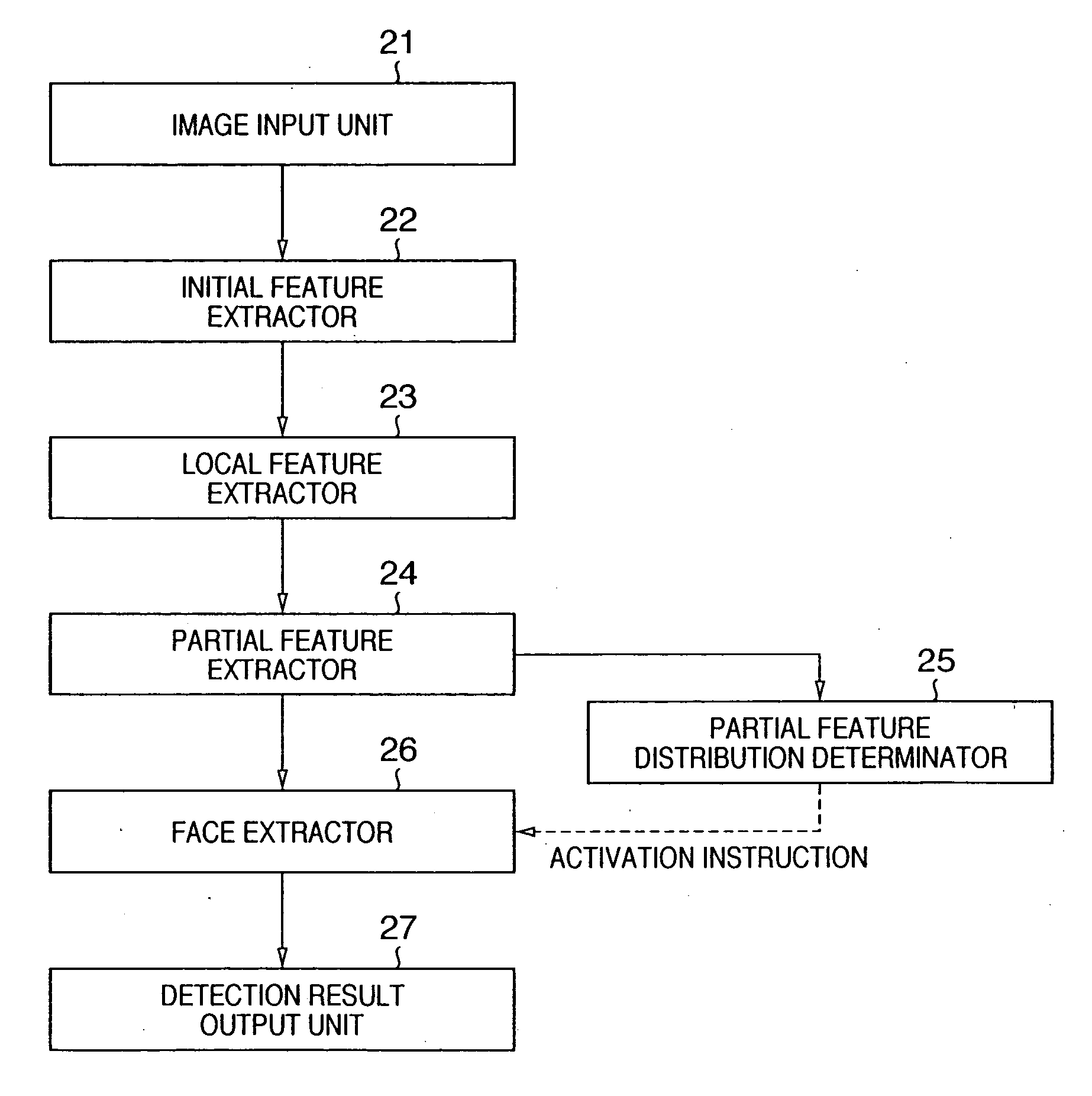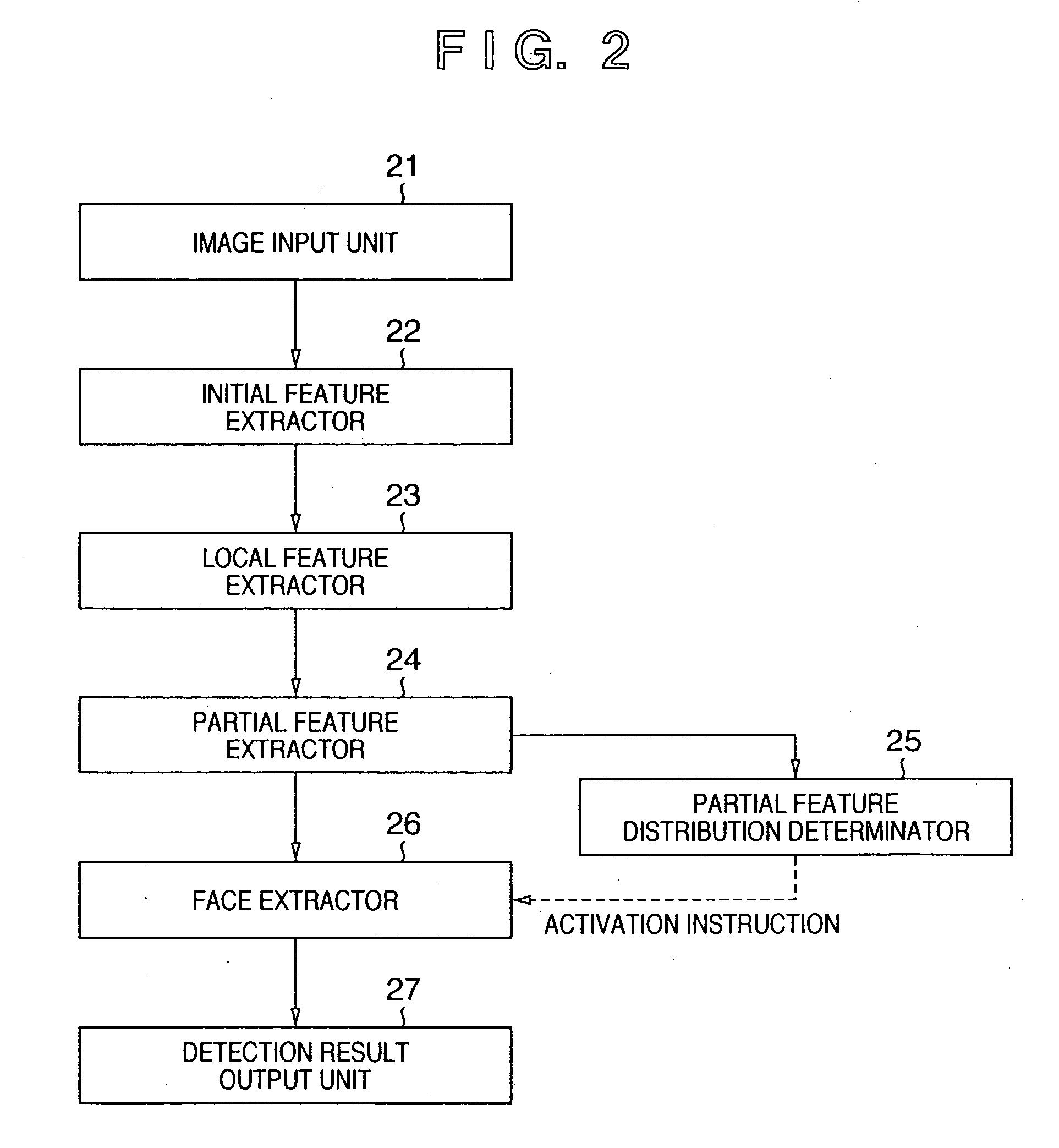Pattern identification method, apparatus, and program
a pattern identification and program technology, applied in the field of method, apparatus, and program, can solve the problems of increasing the possibility of identification errors and increasing the processing cost, and achieve the effect of reducing the possibility of identification errors and reducing the processing cos
- Summary
- Abstract
- Description
- Claims
- Application Information
AI Technical Summary
Benefits of technology
Problems solved by technology
Method used
Image
Examples
first embodiment
(First Embodiment)
[0031] As the first embodiment of the present invention, a method of identifying whether input two-dimensional image data is a certain specific category will be explained below.
[0032] This embodiment assumes, as identification categories, face images as indicated by i to iv in FIG. 4 in each of which the center of a face is present in substantially the center of an input image, and a non-face image as indicated by v in FIG. 4 which is not a face image. A method of identifying whether input image data is the former or the latter of these two categories will be described below.
[0033] In this embodiment, identification of whether input image data is a face image or not will be explained. However, the application of the present invention is not limited to such images. That is, the present invention is also applicable to other image patterns or to a case in which input data is voice data. In addition, to simplify the explanation, identification of whether input image ...
second embodiment
(Second Embodiment)
[0073] In the second embodiment, a method of detecting the position of a face in input two-dimensional image data will be described as a modification of the above first embodiment. In this embodiment, a process of detecting the face in an image will be explained below. However, as in the first embodiment, the application of the present invention is not limited to the process of detecting the face in an image. That is, the present invention is also applicable to a process of detecting another image pattern or a predetermined pattern from input voice data. In addition, the present invention can be applied to detection of objects of a plurality of categories.
[0074] In this embodiment, as a method of detecting, with robustness against variances, a specific pattern from two-dimensional image data by hierarchical feature extraction, the basic configuration of a convolutional neural network (to be referred to as CNN hereinafter) is changed. FIG. 7 shows the basic CNN ar...
third embodiment
(Third Embodiment)
[0108] The third embodiment of the present invention is a modification of the second embodiment. As in the second embodiment, this embodiment performs a process of detecting the position of a face in an image. However, this embodiment is also applicable to another image pattern or voice data. In addition, the embodiment can be applied to detection of objects of a plurality of categories.
[0109]FIG. 10 shows the arrangement of processors of this embodiment. FIG. 11 shows the flow of processing of this embodiment. The basic process configuration of this embodiment is the same as explained in the second embodiment. The processing of this embodiment will be explained below with reference to FIG. 10.
[0110] Processes (steps S1101 to S1109) performed by components from an image input unit 1001 to a skin color region extractor 1007 shown in FIG. 10 are exactly the same as steps S901 to S909 in the second embodiment, so an explanation thereof will be omitted.
[0111] A part...
PUM
 Login to View More
Login to View More Abstract
Description
Claims
Application Information
 Login to View More
Login to View More - R&D
- Intellectual Property
- Life Sciences
- Materials
- Tech Scout
- Unparalleled Data Quality
- Higher Quality Content
- 60% Fewer Hallucinations
Browse by: Latest US Patents, China's latest patents, Technical Efficacy Thesaurus, Application Domain, Technology Topic, Popular Technical Reports.
© 2025 PatSnap. All rights reserved.Legal|Privacy policy|Modern Slavery Act Transparency Statement|Sitemap|About US| Contact US: help@patsnap.com



